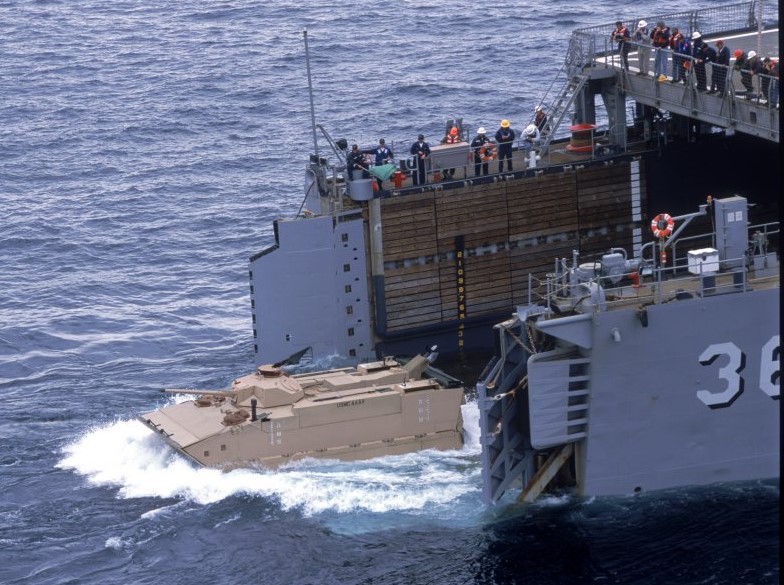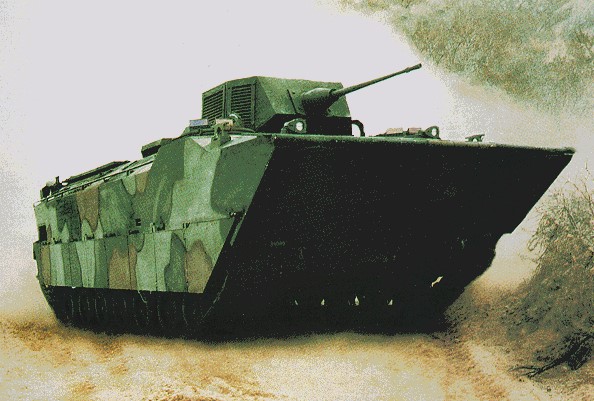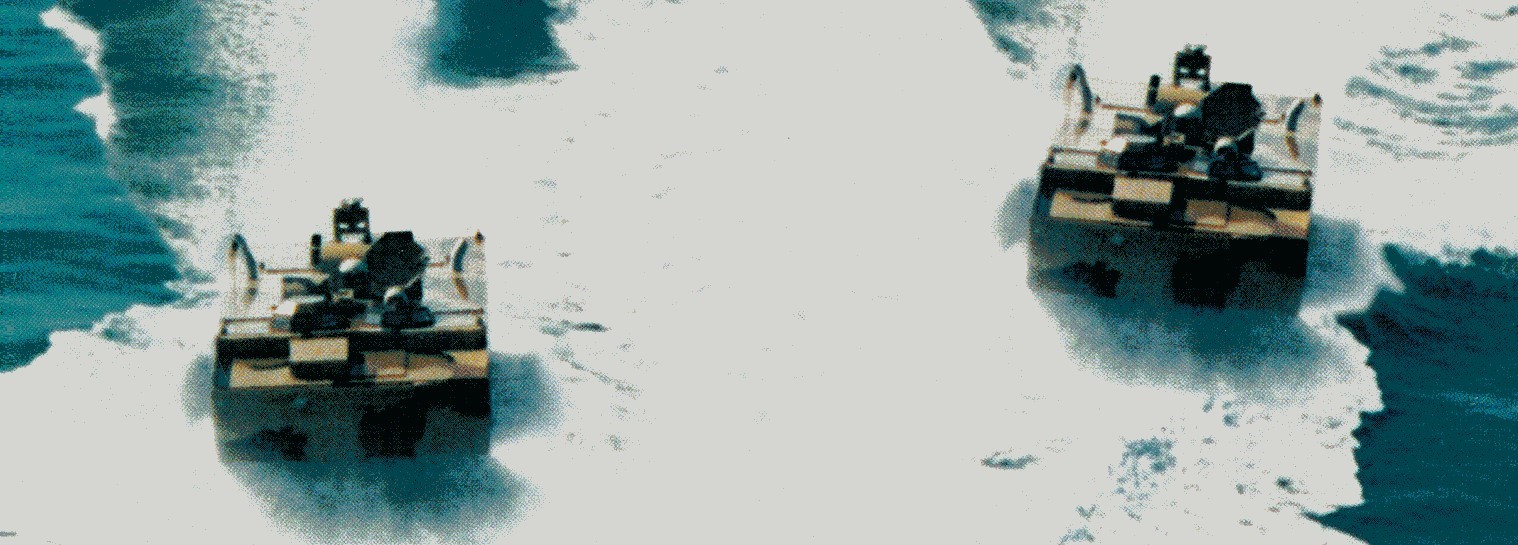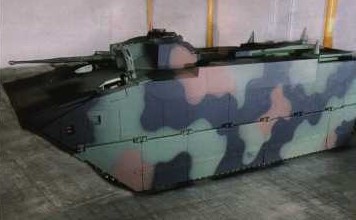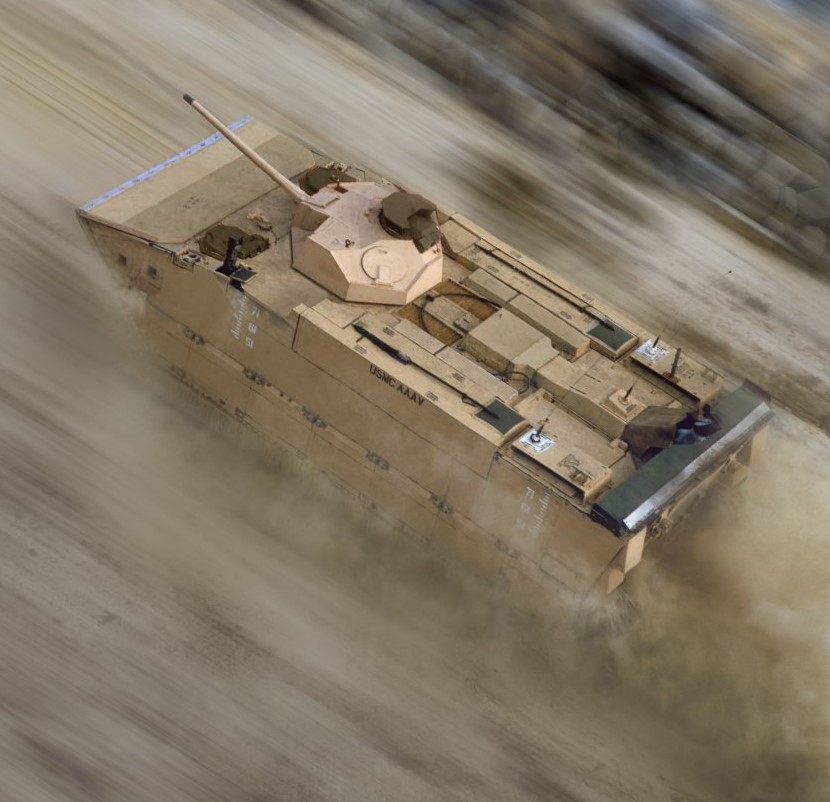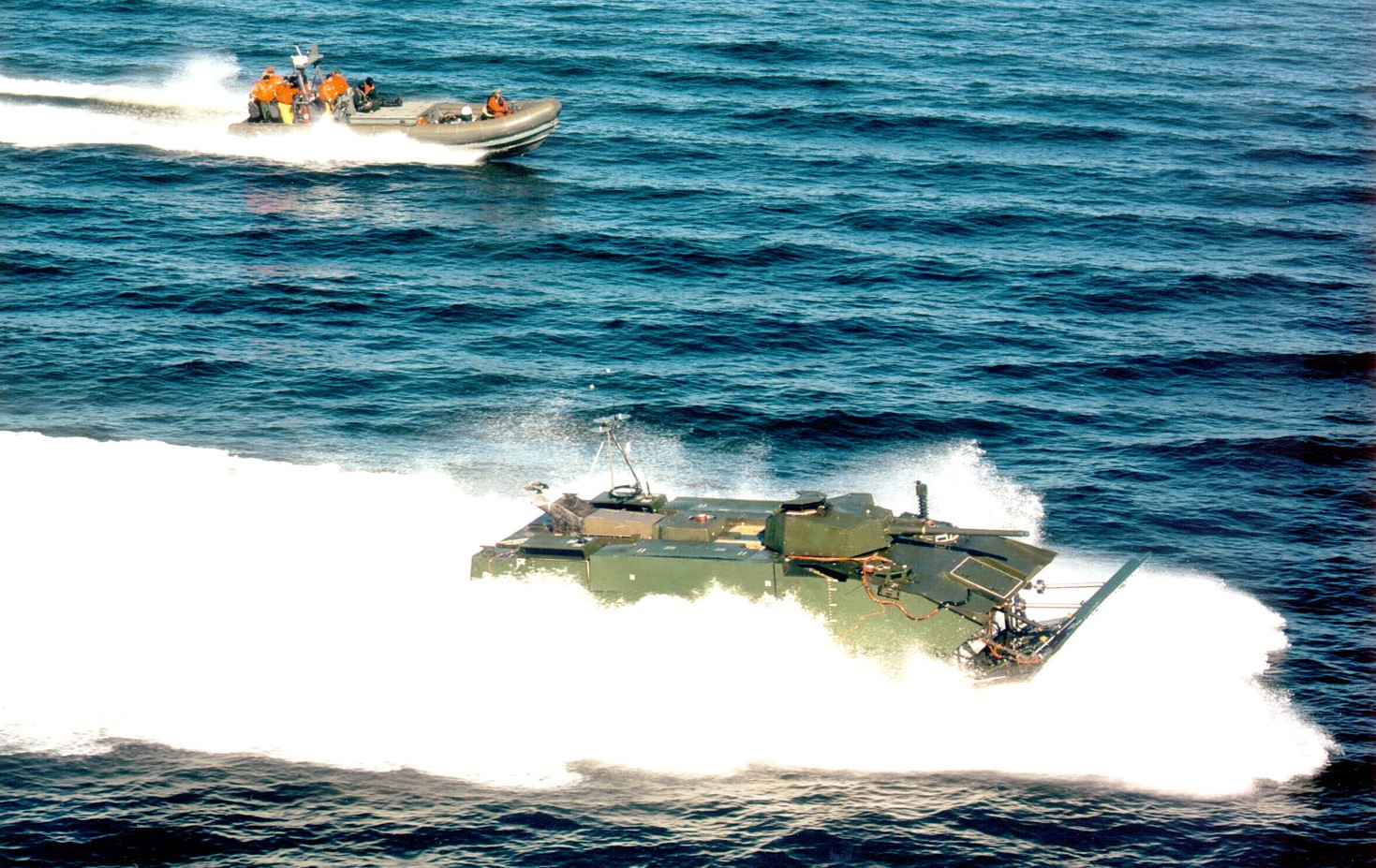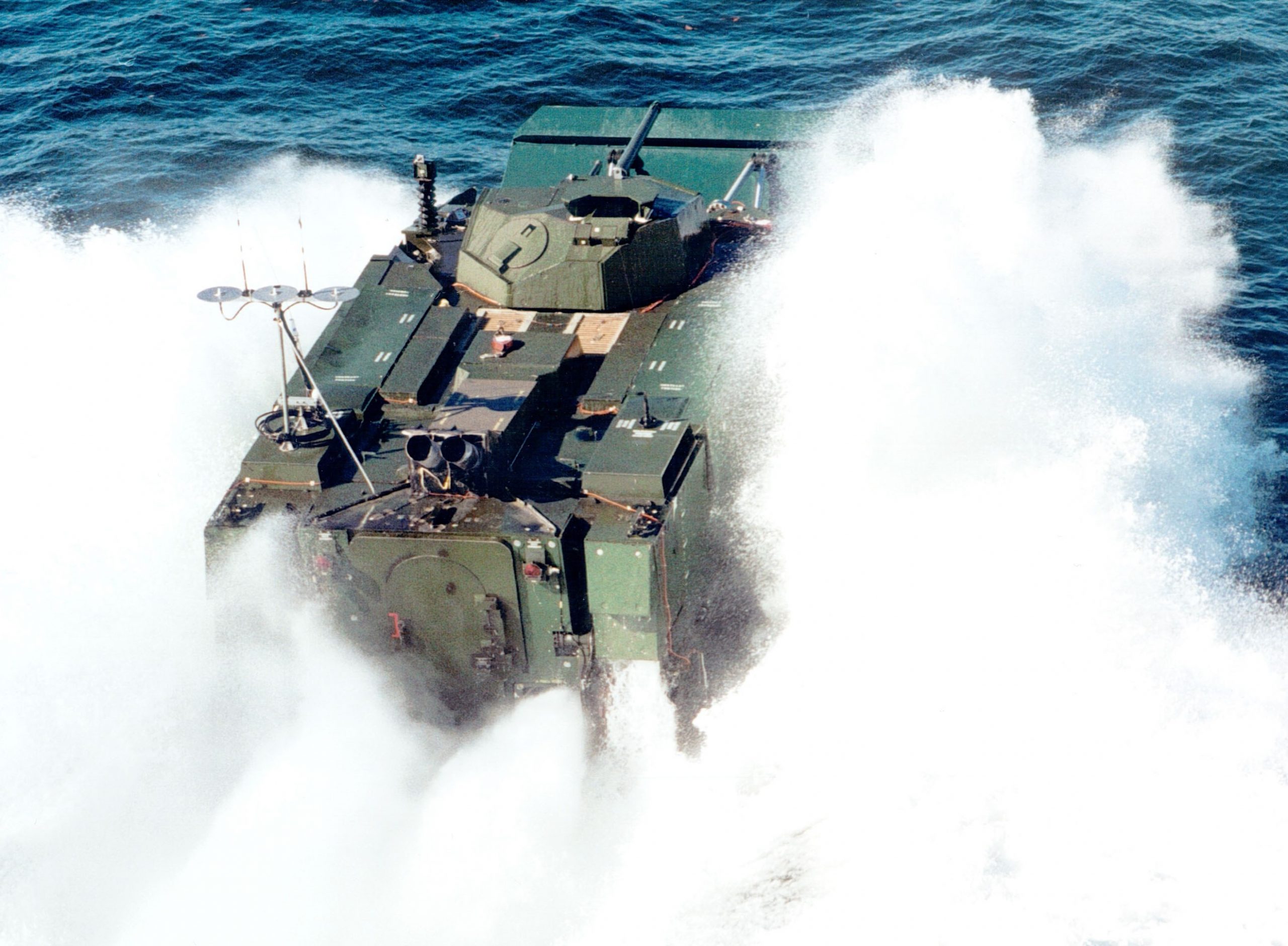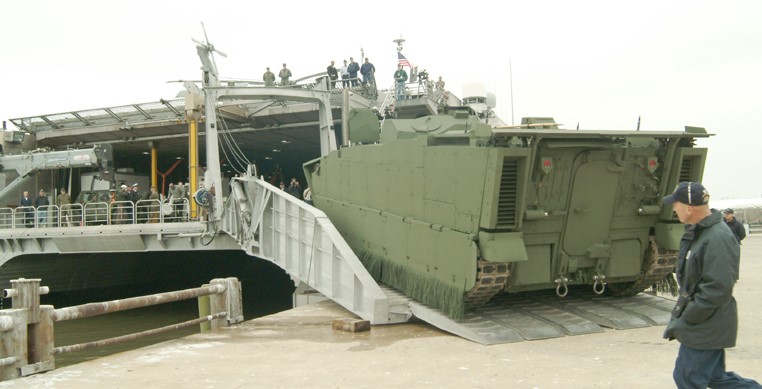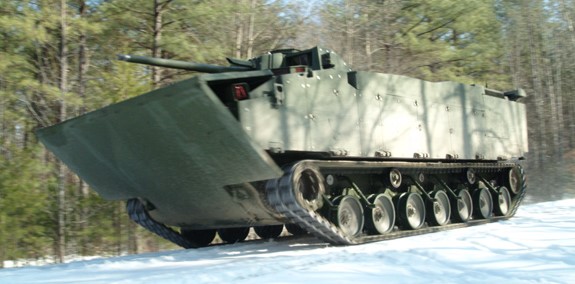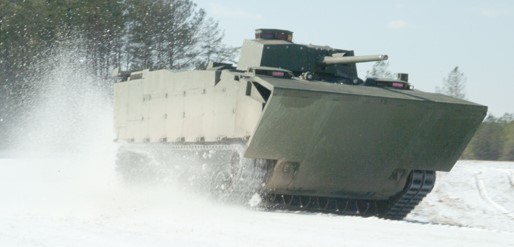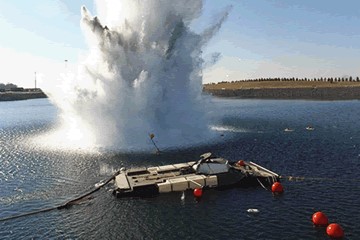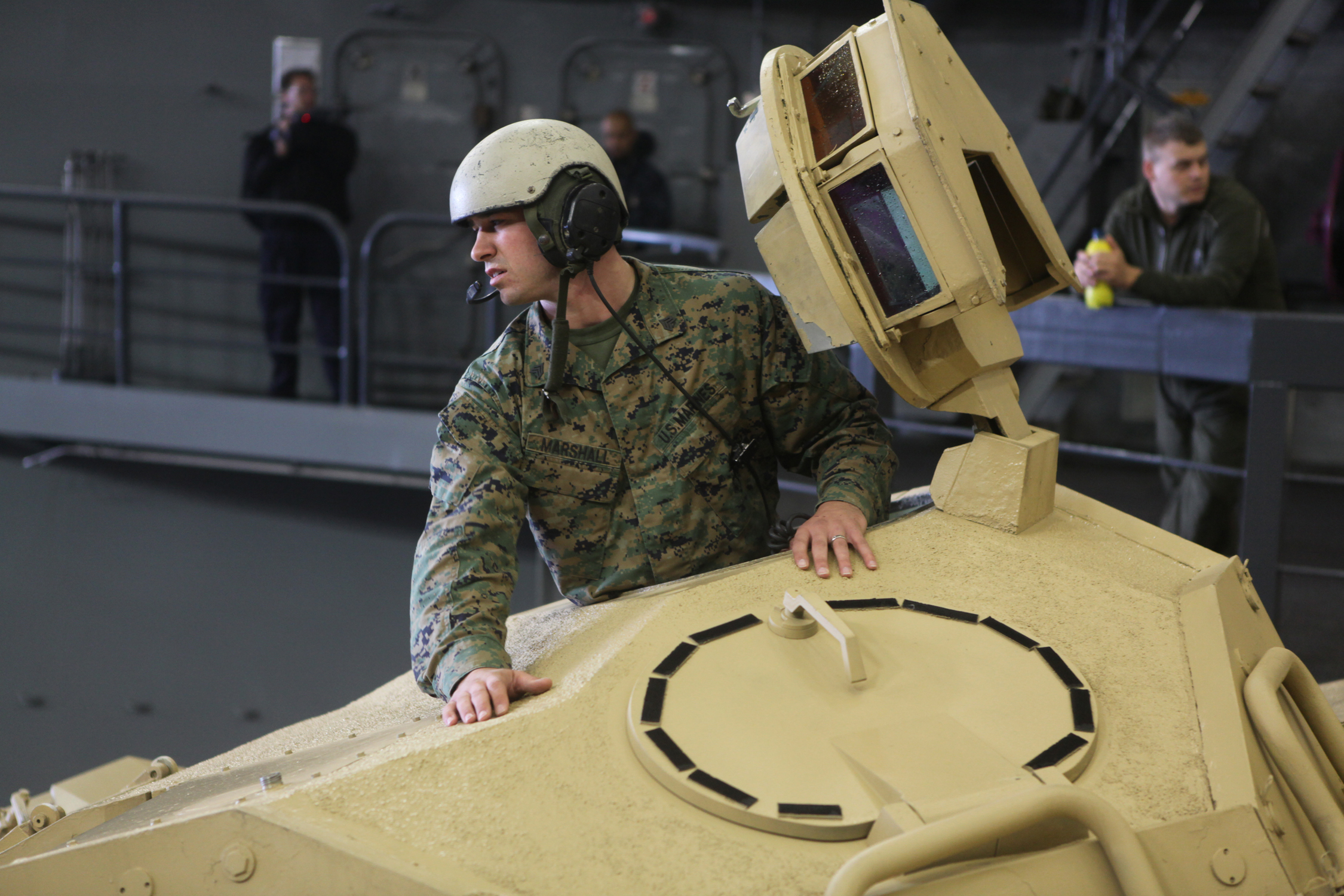The U.S. Marine Corps (USMC) had an impressive, and expensive, replacement for its outdated Cold War era Amphibious Assault Vehicles (AAV). It demonstrated incredible abilities for speed, range and firepower, and then was suddenly canceled in favor of a British empire (BAE Systems) offering that is lacking in performance.
In the mid-1990s, General Dynamics set about to create what the USMC always wanted (officially since 1985), a true ‘kick-ass’ AAV, one that could not only match the M1 Abrams performance on land, but set new standards for performance in water. They called it the Advanced AAV (AAAV).
On 12OCT1995, the official newspaper of USMC’s Camp Lejeune, The Globe, reported that testing at the U.S. Army’s Aberdeen Proving Grounds proved that the AAAV’s suspension was more than adequate: “We’ve been running them through every wicked kind of test we could devise. We want to see what breaks and what doesn’t.”-Colonel Jim Feigley
In the January 1998 issue of Leatherneck, it was optimistically stated that the “triple-AVs…will begin reaching the fleet in 2004.”
In November 2002, sensing resistance in the U.S. Congress to the AAAV/EFV, Daniel Goure, vice president of the Lexington Institute, warned “…in order to execute such operations effectively the Marine Corps will need such systems as the AAAV… it is absolutely essential to have such systems in place before the need arises. Otherwise it will be far too late.”
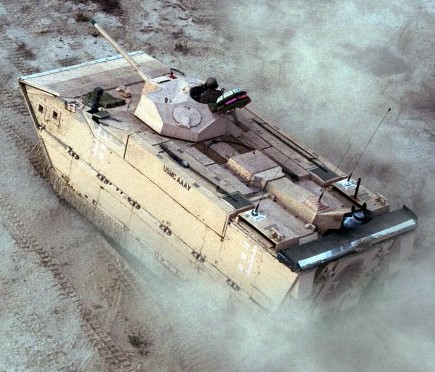
In this USMC photo (date not known) from Camp Pendleton, you can see that the EFV is still referred to as the AAAV.
In 2003, the name was changed to Expeditionary Fighting Vehicle (EFV). Even though each phase of development was successful, there were many delays (as many as 14 years worth), and costs only skyrocketed (estimated at $22.3-million per EFV, in 2007).
2003 promotional video about the EFV. The EFV had hit water speeds of 25-knots, it was able to do this by hydroplaning. To achieve hydroplaning, the roadwheels are raised and special skirts are used (among other tricks):
A land speed of 45-miles-per-hour could be obtained.

EFV testing in Del Mar Boat Base, Camp Pendleton, California. U.S. Navy photo by Journalist Second Class Zack Baddorf, 05DEC2005.
Ballistic protection can defeat rounds up to 14.5mm, or fragments from exploding 155mm artillery projectiles.

From a photo of a demonstration for the Secretary of the Navy, Camp Pendleton, California, 08MAY2006. USN photo by Journalist Chief Petty Officer Craig P. Strawser.
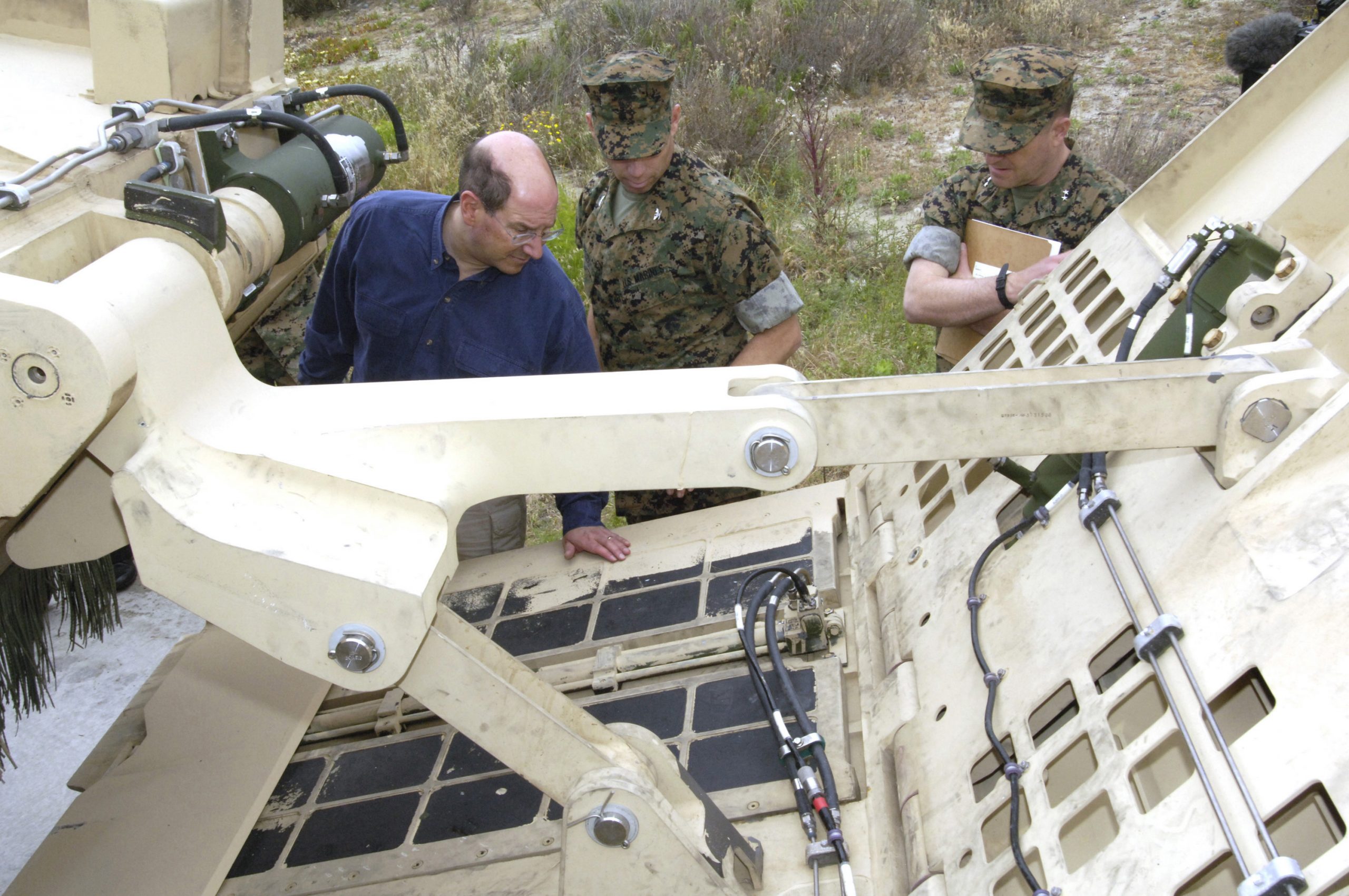
U.S. Secretary of the Navy, Donald C. Winter, checks out the EFV’s extended bow. USN photo by Journalist Chief Petty Officer Craig P. Strawser, 08MAY2006.
In 2007, the USMC reported that it was delaying production due to suspension reliability problems. Those problems were remedied, but also in 2007, a Congressional subcommittee required the addition of armor protection against ‘roadside bombs’ (IED).
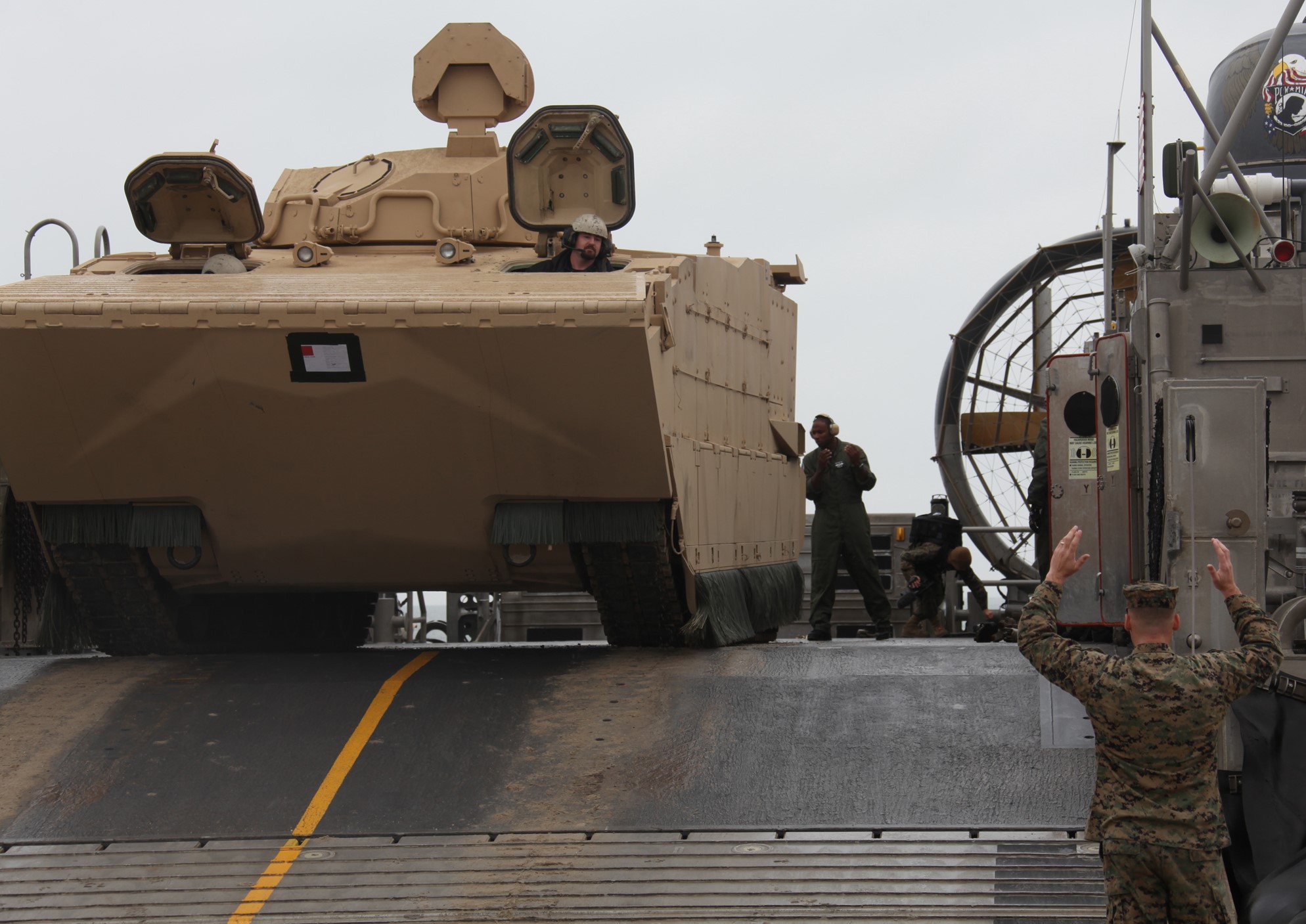
EFV gets loaded aboard a hovercraft, on Camp Lejeune, North Carolina, 30OCT2009. U.S. Marine Corps photo by Staff Sergeant Danielle Bolton.
Random USMC video (by Staff Sergeant Sean McCollum) of EFV hovercraft/landing ship loading operations, 30OCT2009:
In May 2010, USMC Colonel Keith Moore stated that the EFV could “generate never-before-realized operational tempo across warfighting functions” and that it is “the most capable infantry fighting vehicle that will exist in the U.S. inventory at the time it will get fielded. It is a very robust, survivable infantry fighting vehicle that has to meet the Marines’ unique requirements.”
By June 2010, the EFV was handed to the USMC for ‘real-world’ testing.
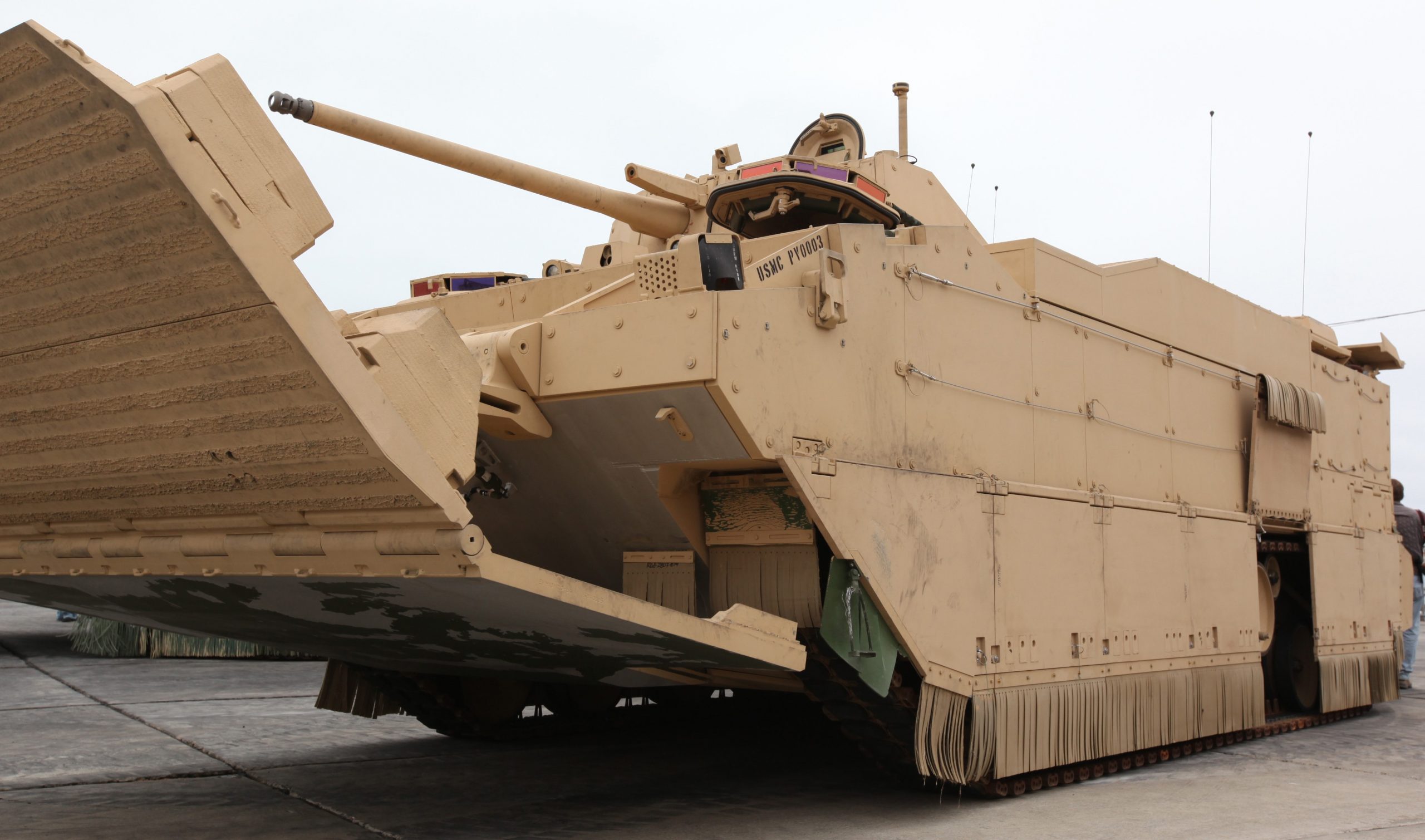
Notice the ‘skirt’ lifted to reveal a raised roadwheel. Camp Pendleton, California. USMC photo by Sergeant Marcy Sanchez, 12JUL2010.
However, then U.S. Defense Secretary Robert Gates had already made hints (before the the USMC began EFV testing) that he was going to cancel the project. Another problem is that the U.S. Navy was considering new amphibious landing ‘rules’ which basically required zero military opposition from the enemy, of course rendering the need for a super amphibious tank unnecessary.
This is a video interview by California newspaper The Orange County Register (OCR), released in August 2010:
Not even five months after The OCR published the above video interview, in January 2011 it published an article announcing the cancelation of the successful kick-ass EFV! The OCR article has some great ‘walk-around’ detail photos of the EFV.
Even after impressive USMC testing results, in January 2011 the DoD cancelled the EFV, and the 35th Commandant of the Marine Corps, General James F. Amos, supported the decision.
25JAN2011: General Dynamics Makes Final Argument for Keeping EFV Alive)
The decision to cancel the EFV was blamed mainly on placating several taxpayer organization calling for an end to spending on long-running development programs, that included the F-35 Lightning-2 and V-22 Osprey. Leadership within the Department of Defense seemed more intent on keeping the aircraft, thus sacrificing the EFV on the alter for concerned taxpayers.
It should be noted the the USMC eventually decided to get rid of its M1A1 Abrams units, as part of their Force Design 2030 reorganization, yet another reason not to have an AAV that could match the M1 in performance.
However, cancelling the EFV did not result in saving money for taxpayers as the rest of the EFV funding went to upgrading the aged AAV7s, which benefited United Kingdom based BAE Systems as BAE took control of the AAV7’s manufacturer United Defense, and on buying a new ‘AAV’ of much less capability, which also just happened to be created by the company BAE Systems. It is called the Amphibious Combat Vehicle (ACV).
Vehicle I-D: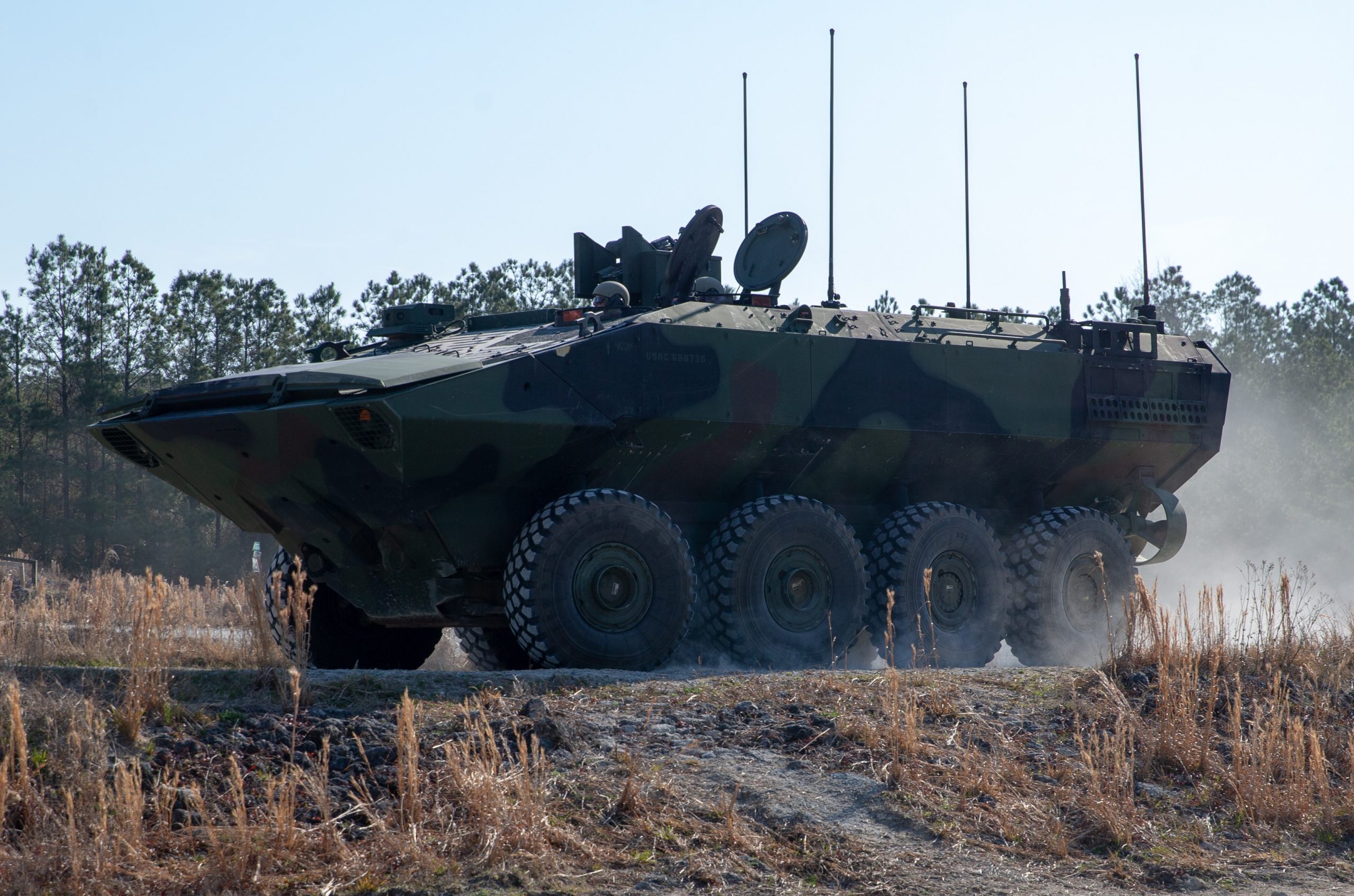 NO MORE AAV, SAY HELLO TO THE ACV, FINALLY?
NO MORE AAV, SAY HELLO TO THE ACV, FINALLY?
2018: USMC AAV7 VIDEO-FEST
Vehicle I-D:
CANADA’S BRITISH EMPIRE M113, NOT YOUR UNCLE SAM’S M113
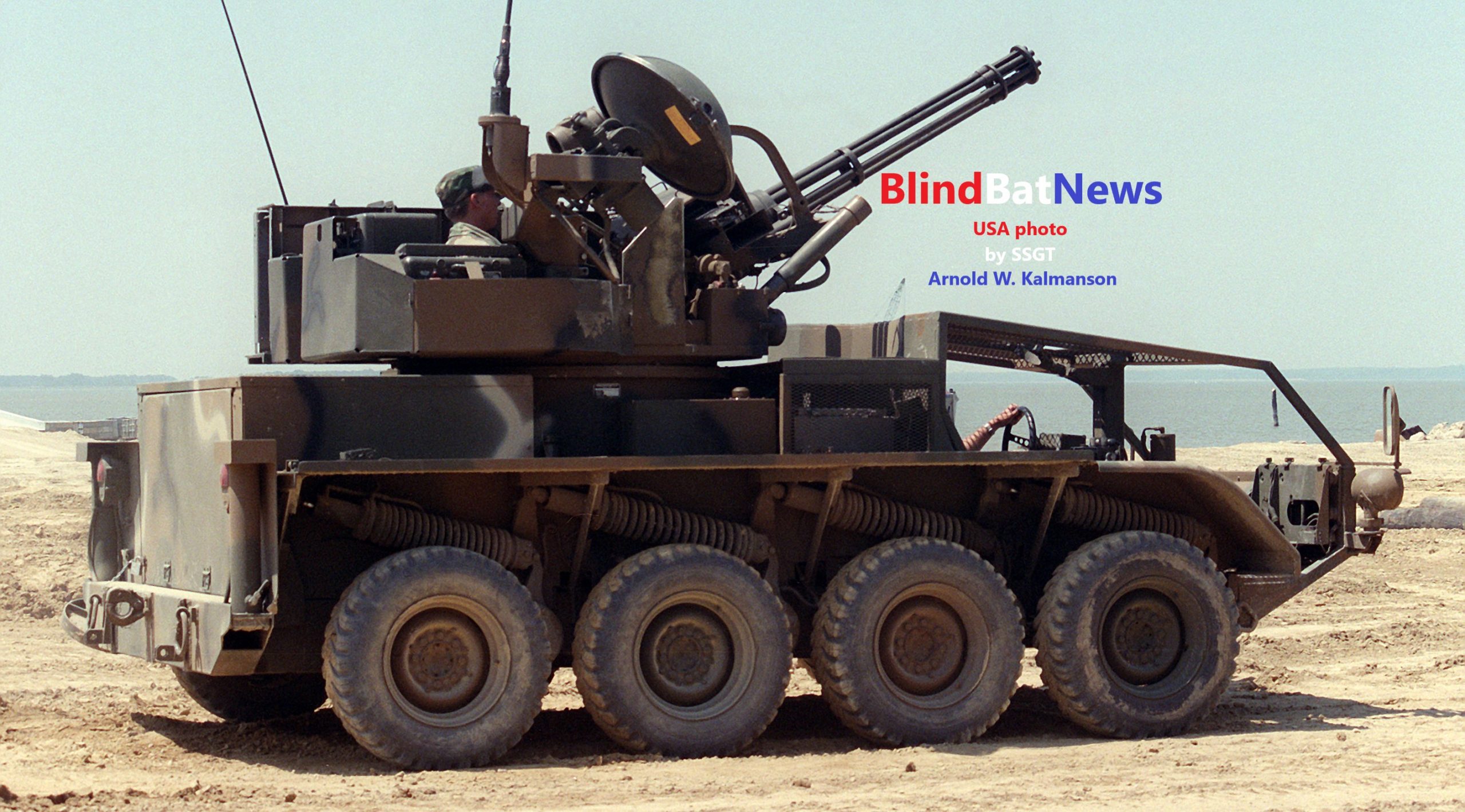 ULTIMATE GUN-TRUCK, 20MM VULCAN, why was it rejected?
ULTIMATE GUN-TRUCK, 20MM VULCAN, why was it rejected?

